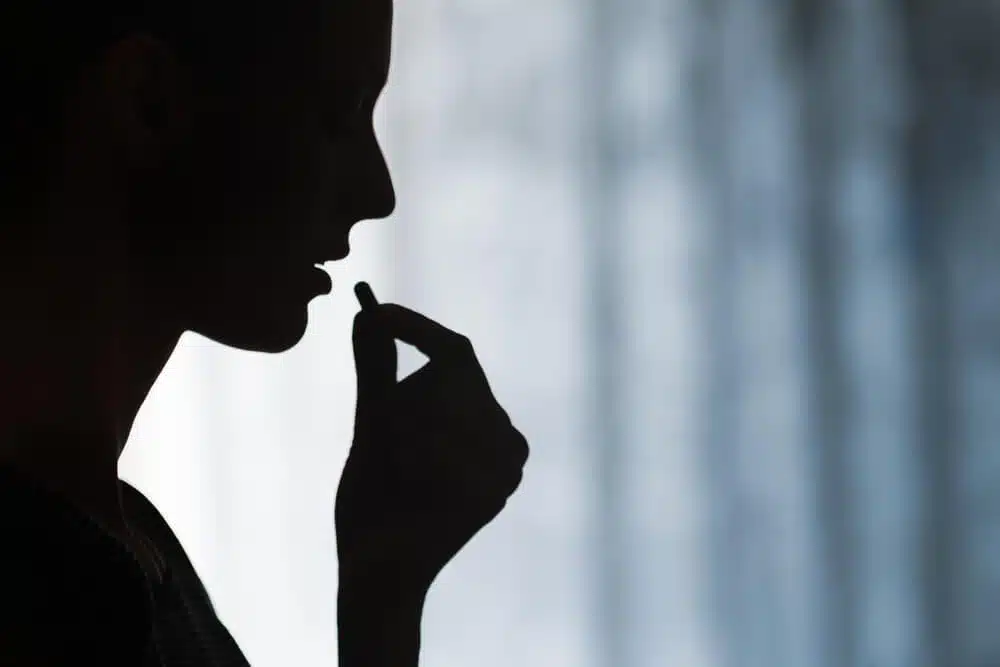
The Opioid Epidemic and Teens
Teens are the newest victims of the opioid epidemic – and they are dying every day. Since 1999, opioid overdose death rates among American kids and teens have tripled.
Young children usually have died from accidental ingestion or from poisoning. But, teens have died from recreational overdoses, using their parents’ prescription painkillers or opioids bought on the street. In total, nearly 9,000 youth have died at the hands of opioids in the past two decades. That is more than one child per day.
Too many parents are burying children who have access to prescription opioids (usually their parents’) or are buying pills or heroin on the street. In fact, most researchers suggest that prescription opioids are the gateway to street heroin. It is not uncommon for adults to stop using their pain medication once an injury has healed and they simply don’t dispose of it.
Opioids that sit in dark medicine cabinets are not going to lose their potency for more than a year. If a teen wants to get high, a forgotten pain pill will do the trick. If the teen wants to make some money, selling a parent’s unused pills can bring in significant amounts of cash. Because teens don’t yet have good reasoning or decision-making capabilities, they can easily fall prey to the suggestions of peers, or the ideas spawned in video games or movies that discuss drugs.
The opioid epidemic is one that began with the over-prescription of opioids by doctors and a lack of knowledge in the general public about how dangerous these drugs are.
Opioids
The most commonly abused prescribed opioids are Vicodin, oxycodone (Oxy), and fentanyl. In previous decades, doctors were very careful about prescribing opioids for unsupervised patient use. They feared abuse and addiction. But, in the last twenty years, doctors have been doling out these opioids like candy for patients who have chronic back pain, to help with recovery after sports injuries, and for those who suffer from other forms of chronic pain.
Opioid pain relievers, like morphine and oxycodone, are normally safe when used short-term and under a doctor’s supervision. But when people use them to get high, the use of these drugs can result in addiction, overdose, or death. Not only do opioids help with pain, they can induce a sense of euphoria that is dangerously addictive.
Opioids work by interacting with opioid receptors on the body’s nerve cells. Our bodies naturally produce opioids, but when the body is under extreme stress and patients are in severe pain, doctor’s prescribe opioids to encourage the body to create more of the natural opioids in hopes of reducing a patient’s pain.
Between 1999 and 2014, the number of opioids prescribed by physicians increased by threefold, creating a stash distributed among parents’ medicine cabinets across the country. The oral pill forms got rid of the need for intravenous injections and initiating opioid use grew exponentially. This gave birth to the current epidemic.
Teen Opioid Use
Although people most often start using drugs during the teen years, opioid addiction has been traditionally restricted to adults in previous generations. This is the first time in history that teens have become entangled in opioid addiction in large numbers.
Adolescence is a critical at-risk period for drug abuse. The teen brain’s reward center grows rapidly during the years just before adolescence. During this time, kids start to differentiate between less and more meaningful rewards, which drives internal motivation.
Though young children can be easily satisfied with rewards, even meaningless tokens, as they become teens, they are progressively more selective about goals and rewards they want to pursue. This behavior peaks during the teen years, when the presentation of meaningless rewards does nothing to the brain’s reward center.
So it’s clear that adolescents are developmentally wired to go after highly stimulating behaviors to earn a larger neurologic reward. This is recognizable in the risk-taking behavior teens often engage in. Unlike natural produced opioids, psychoactive drugs trigger signaling in the reward center directly. Therefore, the peak ages of drug experimentation occur during the teen years.
At the other end of the brain, known as the prefrontal cortex, executive functions like self-monitoring, error correction, and impulse control don’t mature to full efficacy until the mid-30s. As such, adolescents are unskilled at performing these executive functions and don’t view risk the same way adults do. The immaturity of the prefrontal cortex during the teen years appears to create a vulnerability – the brain under the influence experiences changes that result in addiction.
The less a teen is exposed to drugs, the fewer symptoms of drug use among teenagers will be seen. It is not the same with adults. Adults tend to have the cognitive ability to sustain casual use of drugs while teens do not have the brain ability to resist addiction. The underdeveloped state of their brains leaves them vulnerable to addiction. It is essential that parents use prevention and early intervention strategies to delay experimentation with drugs and reduce drug use among teens.
Physiologic vulnerability to substance use in teens can be aggravated by environmental factors, like the accessibility, promotion, and modeling of addiction behaviors either in the family setting or among teens’ peers. Science suggests that teenagers are particularly susceptible to the influence of cultural messaging. Social media, films, music, and YouTube videos are all an inescapable part of teen culture, and teens without proper prevention strategies are more likely to engage in drug use.
Beginning in the late 1990s, the convenience, easy high, and accessibility of prescription pain meds were the perfect invitation for teens to experiment with opioids and become addicted. The combination of increased opioid prescriptions with easy access through stolen prescriptions (often stolen from the parents) began inviting adolescents to use.
Unlike street heroin in earlier decades, which could only be taken through intravenous injection, opioid pills can be swallowed or snorted, making it easier for teens to get that first, all-important and addictive high. By the 2000s, the purity of street heroin had also increased, which gave users the option of smoking or snorting. These more accessible options most likely paved the way for addiction crossover from pain medications to heroin among teens.
Nonmedical use of narcotic medications went up regularly from the early 1990s through the 2000s. But after 2009, as the public perception of opioids began to change, and the incidence of nonmedical use began to decline. By the same token, heroin use peaked among teens in the late 1990s and early 2000s before declining.
According to the national Monitoring the Future study, in 2017, “the rate of heroin use by teens was at a 25-year low, whereas the rate of past-year Vicodin use plummeted from 10.5% in 2003 to an all-time low (since data collection began in 2002) of 2% in 2017. However, overdose death rates continue to rise because adolescents who do develop opioid use disorders (OUDs) face a landscape of more dangerous drugs, including fentanyl contamination.”
Prescription to the Street
A University of Southern California study in the July 8, 2019, issue of JAMA Pediatrics demonstrated that teens who abuse prescription opioids are more likely to start using heroin by high school graduation. Heroin uses a similar method for activating the brain’s reward center as opioids. The euphoric high from opioids can be found and even exceeded when using heroin.
This 2013-2017 study is the first to track prescription opioid and heroin use in a group of teens longitudinally. “In 2017, 9% of the nation’s 47,600 opioid overdose deaths occurred in people under the age of 25, according to data from the Centers for Disease Control and Prevention.
Using twice-yearly surveys to track high schoolers’ use of various drugs, researchers followed 3,298 freshmen from 10 Los Angeles-area high schools throughout their senior year. Participants were asked about their previous and current use of prescription painkillers — such as Vicodin, Oxycontin and Percocet — to get high.”
The researchers further asked the students about heroin use or the use of other substances like marijuana, alcohol, cigarettes, meth, and inhalants. The scientists made mathematical adjustments to account for variations in the family environment, psychological temperament, family history of drug abuse, and other variables that can come with prescription opioid abuse.
Of the more than 3000 students who participated in the study, 596 reported using prescription opioids to get high during high school. The researchers also discovered that students who used prescription painkillers to get high were more likely to use heroin later on. Studies like these indicate that teens have been largely overlooked when the opioid epidemic is addressed in scientific and political circles. Researchers are continuing to study the association between prescription opioid abuse and heroin use later in life.
To back up their results, the scientists evaluated whether weed, alcohol, and meth use were at all linked with later heroin use. However, the relationship between prescription opioids and heroin use was far stronger than the associations for heroin use with any other drugs or illicit substances.
Parental Role in Teen Opioid Use
Teens are more likely to abuse prescription opioids if their parents do according to current research. Based on the evidence that children of alcoholics or drug addicts are more likely to become addicts themselves, the connection to parental use of opioids and the resulting use by their children should be expected. Most children are going to mimic the behavior of their parents – even when the behavior is detrimental to their health and development. Teens and children simply don’t have the maturity and cognitive ability to reasonably determine why such behavior is bad.
During a recent study, parents and teens were asked if they ever stole opioids that were not prescribed to them or if they took prescription opioids for the high. They were also asked questions about their romantic and other relationships, additional substance abuse, social demographics, and psychosocial attributes.
“Results showed 14% of adolescents misused prescription opioids if their parents did compared to 8% if their parents did not. The findings held true after controlling for other factors, according to the study ‘Nonmedical Prescription Opioid Use by Parents and Adolescents in the US’ published in Pediatrics.”
Further evaluation found that a mother’s opioid use reasonably predicted teen use. However, race, culture, and gender did not contribute to a correlation between parent and child use.
And while most parents would agree that smoking in front of their kids can lead their children to smoke, studies also show that teens of parents who smoke are more likely to misuse prescription opioids. When teens smoke, use pot, experience depression and act in violation of the law, they are more likely to abuse prescription opioids. Teens with a strong faith and who believe drugs to be risky are less likely to start using.
Researchers say there are various explanations for the link between parent and teen opioid use. Teens could simply be copying their parents’ behavior, there could be genetic factors, drugs may be more readily available in their homes, or they are the victims of inadequate parenting. Many parents are uncomfortable with the notion of discussing drugs and alcohol with their teens, but it is an essential part of protecting your teens from drugs.
Parents should talk with their children about the family’s views on drugs and why it is essential to stay clean. This is a conversation should be had early in the teenage years and more than once. Parents should use scenes from social media, television, music, or films that show drug use to demonstrate the damage drugs can do. Parents should never be afraid to ask their teens about possible drug use and make it known that their questions are always welcome.
Conclusion
It is in the best interest of our children and society if more people are educated on the need to properly control their prescription opioids and dispose of any unused medication immediately. A teen’s opioid addiction most often starts at home, in the parents’ medicine cabinet, and can lead to criminal activity, overdose, and even death.




